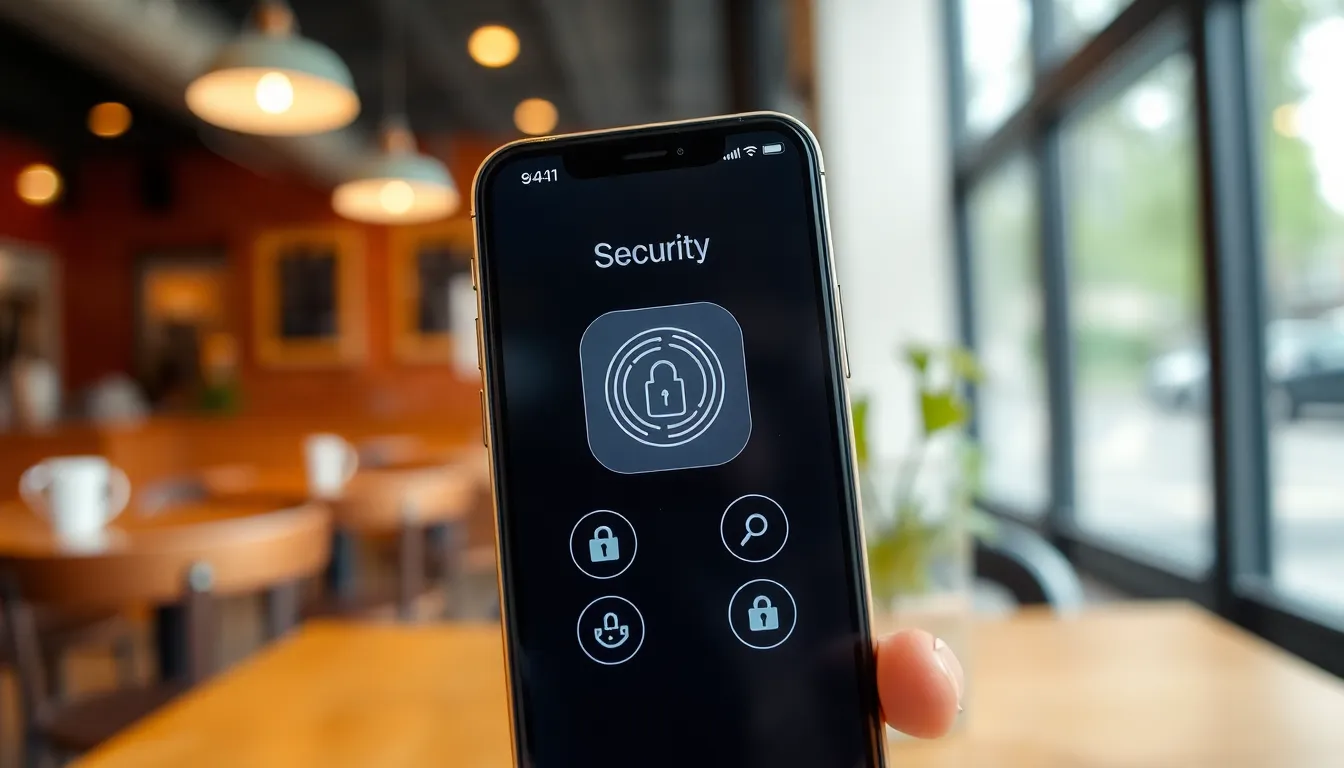Table of Contents
ToggleIn today’s tech-savvy world, your iPhone is like a digital vault for your secrets, photos, and memes. But what if that vault’s been compromised? Imagine someone rummaging through your private life while you’re blissfully scrolling through cat videos. It’s a nightmare scenario, but it can happen to anyone.
Common Signs Your iPhone May Be Hacked
Several indicators suggest that an iPhone may have been compromised. Recognizing these signs promptly can help in taking necessary actions to secure personal information.
Unusual Battery Drain
A significant drop in battery performance often signals suspicious activity. If the battery drains faster than usual, it could result from unauthorized applications operating in the background. Frequent hot temperatures during usage may also indicate hidden processes running. Battery health metrics display unusual depletion levels compared to typical usage patterns. Regular check-ins on battery settings reveal if any unfamiliar apps consume excessive power.
Unexpected Data Usage
Increased data usage can suggest potential hacking. Out-of-character spikes in cellular data consumption often indicate background apps communicating without user consent. Monitoring data statistics reveals unexplained jumps that stand out when compared to historical usage. Many users notice unfamiliar apps using significant data, raising alarm. Tracking data usage closely allows for prompt investigation into any suspicious patterns.
Security Features on iPhone

iPhones come equipped with robust security features designed to safeguard personal information. These measures include encryption, biometric authentication, and privacy protections that enhance user safety.
Built-In Security Measures
Apple implements various built-in security measures that protect user data. Face ID and Touch ID provide biometric authentication, ensuring that only authorized users can access the device. Encryption safeguards data at rest and in transit, making unauthorized access difficult. Secure Enclave technology enhances encryption key management, bolstering overall security. App Tracking Transparency gives users control over how applications track their activity. These features work together to create a secure environment for personal data.
Regular Software Updates
Regular software updates play a critical role in maintaining device security. Apple’s iOS updates often contain security patches that address vulnerabilities. These updates enhance device performance and provide new features. Users receive notifications when updates are available, encouraging timely installation. Failing to update an iPhone can leave it susceptible to malware and other threats. By ensuring the device runs the latest iOS version, individuals significantly reduce the risk of security breaches.
Steps to Verify if Your iPhone is Hacked
Taking steps to verify if an iPhone has been hacked can help restore peace of mind. Users can follow specific actions to identify unauthorized access or suspicious behavior.
Check for Unusual Activity
Monitor for unusual activity by observing phone behavior. Unexplained data usage often indicates unauthorized apps running in the background. Frequent pop-ups or unexpected notifications may also point to hacking. Users should track apps that drain battery life unexpectedly, as unauthorized programs can consume resources without permission. Additionally, logging into accounts from unfamiliar devices or areas signals a potential breach. Changes in settings or configurations without user input further hint at possible hacking.
Review Installed Apps
Examine the installed apps regularly for any unfamiliar entries. Users often find unauthorized applications that they did not download. Deceptive apps may disguise themselves, appearing similar to legitimate software. Checking app permissions is vital, ensuring apps do not access personal information without consent. Users should delete any apps that seem suspicious or unused. Keeping track of app updates, including any changes in functionality, helps identify potential threats. Noticing odd behavior within installed apps can indicate that an iPhone has been compromised.
What to Do If You Suspect Hacking
If there’s a suspicion of hacking, acting quickly is crucial. Here are some effective steps to take.
Change Your Passwords
Changing passwords immediately enhances security. Focus on the Apple ID and other accounts linked to the iPhone. Strong, unique passwords decrease the chance of unauthorized access. Utilize a mix of letters, numbers, and symbols in the passwords for better protection. Enable two-factor authentication for the Apple ID, as it adds an extra layer of security. Regularly updating passwords can further diminish risks associated with hacking.
Reset Your iPhone
Resetting the iPhone can help restore its original settings for enhanced security. Before proceeding, backing up essential data is important to avoid loss. Navigate to the Settings menu, then select General and Reset. Opt for Erase All Content and Settings to completely wipe the device. This action removes all apps, personal information, and settings. After the reset, set up the iPhone as new to ensure no compromised data remains. Reinstall only trusted apps, thereby reducing potential vulnerabilities.
Taking steps to protect an iPhone from hacking is essential in today’s digital landscape. By staying vigilant and recognizing the signs of potential breaches users can safeguard their personal information effectively. Regularly monitoring device activity and being proactive with security measures can make a significant difference.
It’s crucial to utilize the built-in security features and keep the device updated to minimize vulnerabilities. If there’s any suspicion of hacking taking immediate action is vital. By following the recommended steps users can not only address any security concerns but also restore their peace of mind. Prioritizing device security ensures that personal data remains safe and secure in an increasingly connected world.







